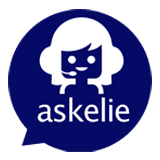Universities and the AI divide is shaping how higher education prepares students for the future. AI is everywhere in education right now. Some students are using tools to draft essays, generate study notes, or even simulate job interviews. Others are struggling to keep up or unsure where to begin. Lecturers are caught in the middle, balancing innovation with integrity. This split is the AI divide, and universities are on the frontline.
The divide is not only about who uses AI, but about who benefits from it. Students with access to the latest tools and the confidence to use them are getting ahead. Those without support risk falling behind. The challenge for universities is to close this gap, not widen it.
Why Universities and the AI Divide Matters Today
Universities are more than places of learning. They are gateways to opportunity. If some students gain an unfair advantage with AI while others miss out, the playing field becomes uneven. That affects academic outcomes, career readiness, and ultimately social mobility.
At the same time, ignoring AI is not an option. Employers expect graduates to be confident with digital tools, and governments are investing heavily in AI-driven innovation. Universities that fail to adapt risk leaving their students underprepared.
The Risks for Higher Education
The risks of Universities and the AI Divide go beyond just academics this the AI divide creates several risks for universities.
- Academic integrity: Concerns about plagiarism, ghostwriting, and assessment fairness.
- Inequality: Some students thrive with AI, others are left behind.
- Reputation: Institutions that mishandle AI adoption risk losing credibility.
- Compliance: Universities must meet accessibility, privacy, and data security standards.
These risks are serious but manageable. The key is not to ban AI but to use it responsibly.
How Universities and the AI Divide Affect Students.
The impact of universities and the AI divide is already visible in academic outcomes and career readiness. Universities can take practical steps to make AI inclusive and fair.
1. Provide equal access
Ensure all students have access to approved AI tools rather than leaving it to chance. A centralised approach reduces inequality and sets clear expectations.
2. Focus on training
Students and staff need to understand what AI can and cannot do. Training should cover practical use, ethical boundaries, and compliance with university policy.
3. Redesign assessments
Traditional essays and exams are not the only way to test knowledge. Oral presentations, in-class problem solving, and project-based work reduce reliance on text generation.
4. Build transparency
When AI is used, there should be clear disclosure. Students should be able to say what tools they used and how, building a culture of honesty.
5. Support accessibility
AI can be a lifeline for students with additional needs, but only if tools are designed inclusively. This is where accessible AI like askVERA makes a difference.
The Role of AskElie
AskElie is built for responsible AI adoption. For universities, it offers modules that address real challenges.
- askVERA delivers Easy Read and accessible content for students who need information in simpler formats.
- intELIEdocs handles contracts, policies, and paperwork, freeing staff to focus on teaching.
- askTARA supports procurement and compliance in university supply chains.
By embedding compliance, transparency, and accessibility, AskElie helps institutions adopt AI without adding new risks.
Real-World Impact
A university rolling out AI for study support can make sure all students benefit, not just those with tech savvy. With askVERA, complex reading lists can be simplified into accessible formats, helping students with learning differences stay on track.
A faculty considering AI for marking support can use governance features to explain how results are generated, reducing concerns about fairness.
A student services team handling thousands of queries can use conversational AI to answer routine questions while keeping staff free for complex issues. The result is better service and less stress.
Taking Action on Universities and the AI Divide
The AI divide is already here. Students are using tools whether universities approve or not. The choice is not whether AI will enter higher education, but whether it will be managed well.
Universities that act now can:
- Ensure fairness across their student body.
- Build trust with staff, students, and regulators.
- Prepare graduates for a world where AI is part of every workplace.
Those that wait risk falling behind, both academically and reputationally.
Closing Thought
AI is not going away. The real question for universities is whether they let it deepen inequality or use it to close the gap. The AI divide is real, but it does not have to be permanent.
By providing equal access, training, transparency, and accessible tools, higher education can make AI a force for inclusion. AskElie is here to help. Our platform is designed to make AI fair, trusted, and inclusive. The future belongs to universities that embrace the change and ensure every student benefits.



Comments are closed